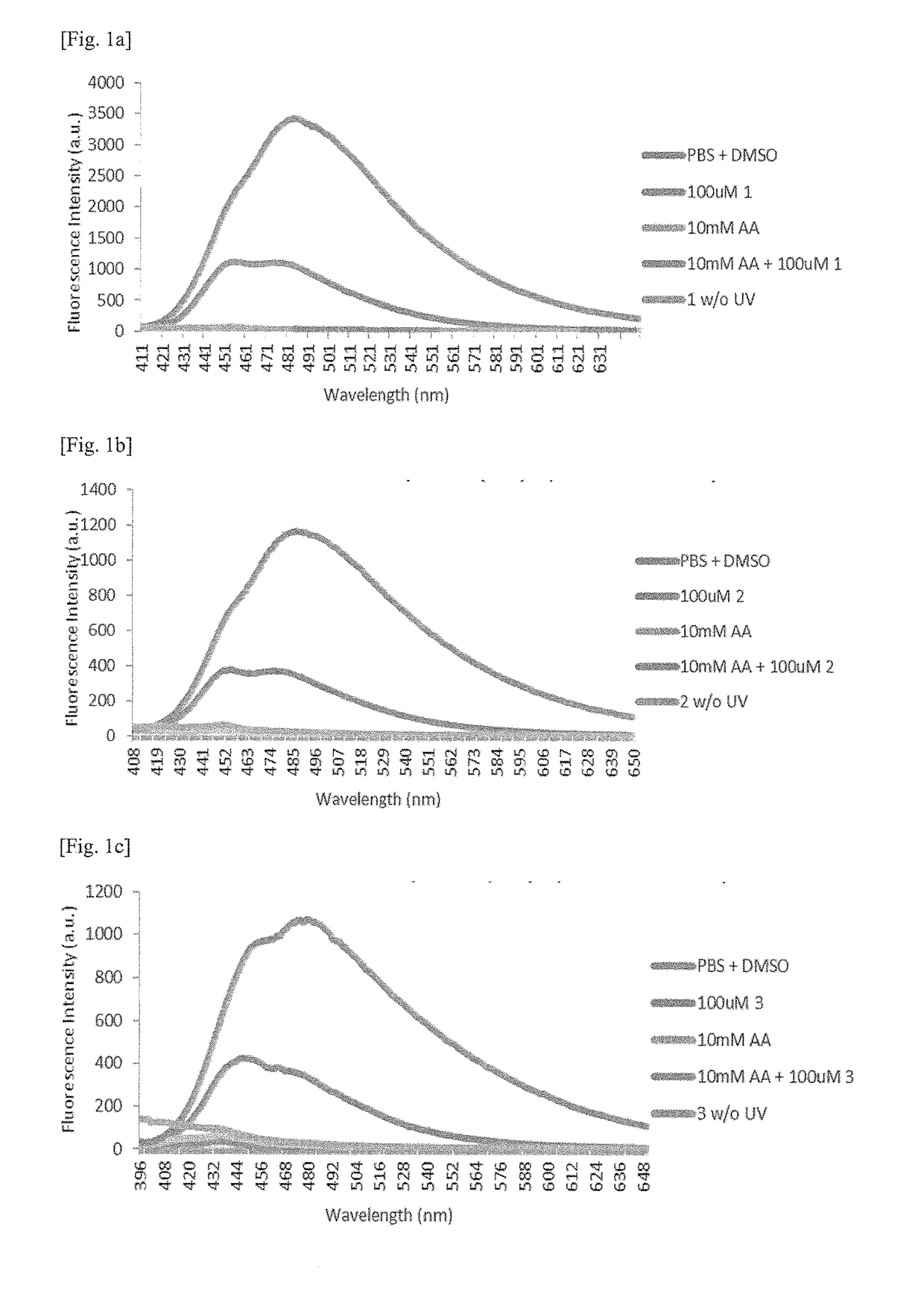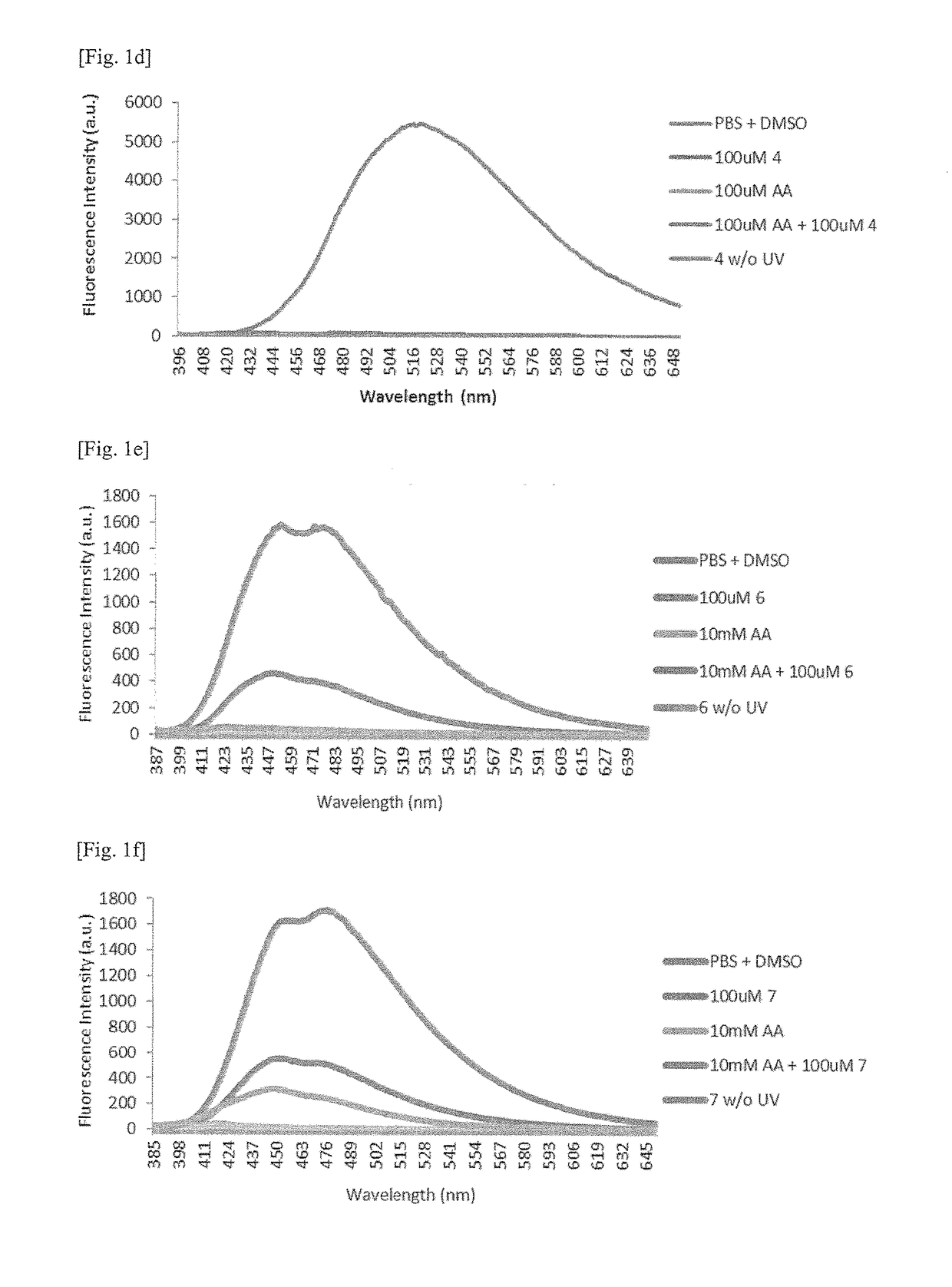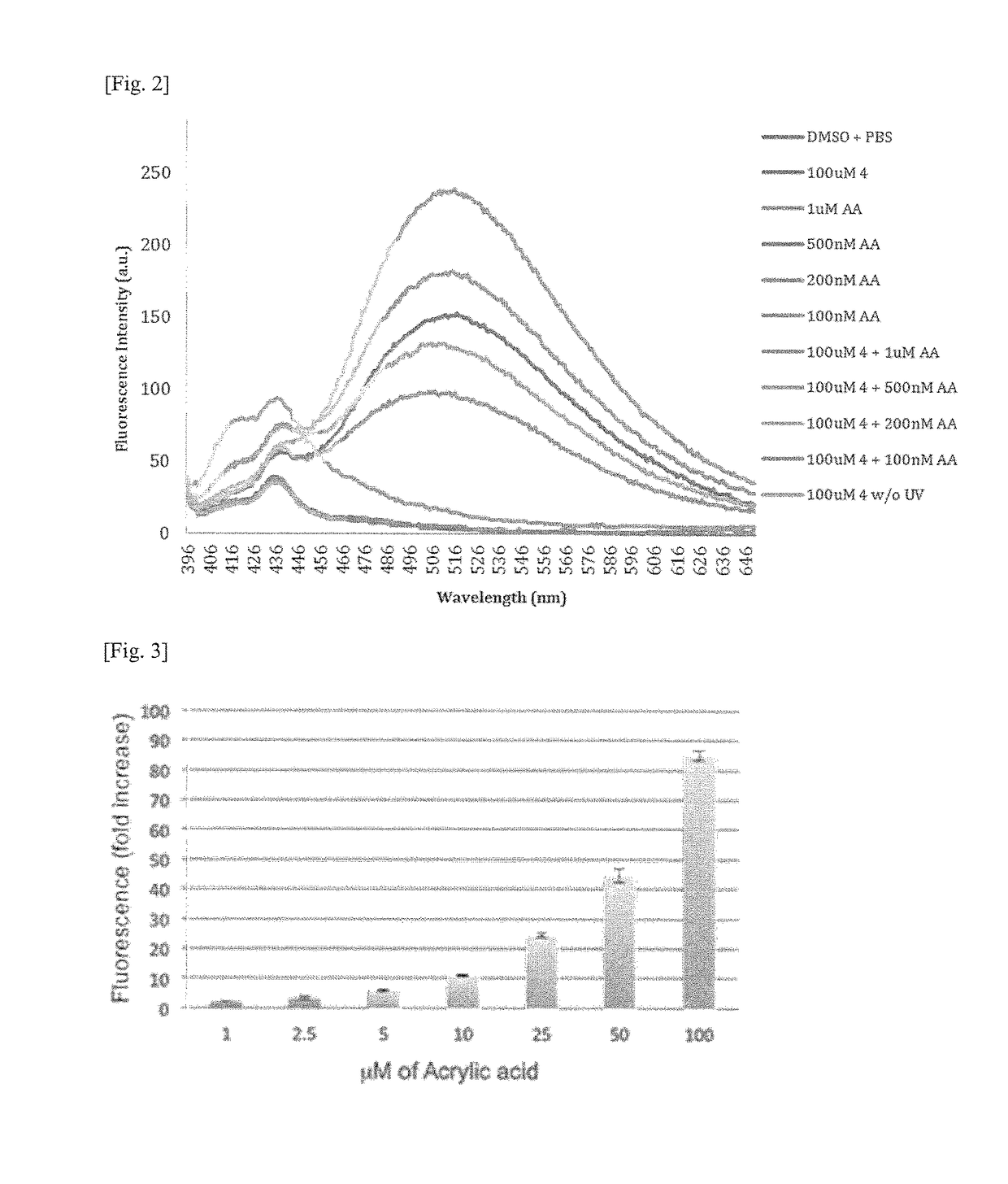Detection of acrylic acid
a technology of acrylic acid and detection method, applied in the field of detection of acrylic acid, can solve the problems of low throughput of methods, tedious sample preparation procedures, and chemical derivatization of compounds to be used as sensors,
- Summary
- Abstract
- Description
- Claims
- Application Information
AI Technical Summary
Benefits of technology
Problems solved by technology
Method used
Image
Examples
example 1
and Characterization of Diaryltetrazole Compound 1 and Pyrazoline Product 1P
[0125]Reaction Scheme 1a below shows the reaction pathway of diaryltetrazole compound 1.
[0126]Methyl 4-formylbenzoate (0.824 g, 5 mmol) was dissolved in ethanol (50 mL), and benzenesulfonohydrazine (0.863 g, 5 mmol) was added. The mixture was stirred at room temperature for 1 hour, then quenched with water (100 mL) and stirred for 15 minutes at room temperature. The precipitate was filtered and washed with cold ethanol. The precipitate was then dissolved in pyridine (30 mL) for the next reaction. Aniline (0.465 g, 0.46 mL, 5 mmol) was separately dissolved in water:ethanol (1:1, 8 mL) and concentrated HCl (1.3 mL) was added. NaNO2 (0.346 g, 5 mmol) was also separately dissolved in water (2 mL). The aniline solution was cooled in an ice bath for 5 minutes before addition of NaNO2 solution to the aniline solution drop wise in an ice bath. The reaction mixture was added dropwise to the cooled product from the fi...
example 2
and Characterization of Diaryltetrazole Compound 2 and Pyrazoline Product 2P
[0129]Reaction Scheme 2a below shows the reaction pathway of diaryltetrazole compound 2.
[0130]Methyl 4-formylbenzoate (0.820 g, 5 mmol) was dissolved in ethanol (50 mL), followed by addition of benzenesulfonohydrazine (0.862 g, 5 mmol). The mixture was stirred at room temperature for 1 hour, then quenched with water (100 mL) and stirred for 15 minutes at room temperature. The precipitate was filtered, washed with cold ethanol and dissolved in pyridine (30 mL) to form solution A. 4-fluoroaniline was then dissolved (0.555 g, 0.48 mL, 5 mmol) in water:ethanol (1:1, 8 mL) and concentrated HCl (1.3 mL). NaNO2 was dissolved (0.345 g, 5 mmol) in water (2 mL). Both mixtures were cooled in ice bath for 5 minutes before addition of NaNO2 solution to 4-fluoroaniline solution drop wise in ice bath to form solution B. Solution B was added to solution A drop wise in ice bath. The mixture was then stirred for 1 hour at roo...
example 3
and Characterization of Diaryltetrazole Compound 3 and Pyrazoline Product 3P
[0133]Reaction Scheme 3a below shows the reaction pathway of diaryltetrazole compound 3.
[0134]Methyl 4-formylbenzoate (0.820 g, 5 mmol) was dissolved in ethanol (50 mL), followed by addition of benzenesulfonohydrazine (0.859 g, 5 mmol). The mixture was stirred at room temperature for 1 hour, then quenched with water (100 mL) and stirred for 15 minutes at room temperature. The precipitate was filtered, washed with cold ethanol and dissolved in pyridine (30 mL) to form solution A. 2, 4-fluoroaniline was then dissolved (0.645 g, 0.50 mL, 5 mmol) in water:ethanol (1:1, 8 mL) and concentrated HCl (1.3 mL). NaNO2 was dissolved (0.345 g, 5 mmol) in water (2 mL). Both mixtures were cooled in ice bath for 5 minutes before addition of NaNO2 solution to 2, 4-fluoroaniline solution drop wise in ice bath to form solution B. Solution B was added to solution A drop wise in ice bath. The mixture was then stirred for 1 hour ...
PUM
| Property | Measurement | Unit |
|---|---|---|
| wavelength | aaaaa | aaaaa |
| wavelength | aaaaa | aaaaa |
| pH | aaaaa | aaaaa |
Abstract
Description
Claims
Application Information
 Login to View More
Login to View More - R&D
- Intellectual Property
- Life Sciences
- Materials
- Tech Scout
- Unparalleled Data Quality
- Higher Quality Content
- 60% Fewer Hallucinations
Browse by: Latest US Patents, China's latest patents, Technical Efficacy Thesaurus, Application Domain, Technology Topic, Popular Technical Reports.
© 2025 PatSnap. All rights reserved.Legal|Privacy policy|Modern Slavery Act Transparency Statement|Sitemap|About US| Contact US: help@patsnap.com



